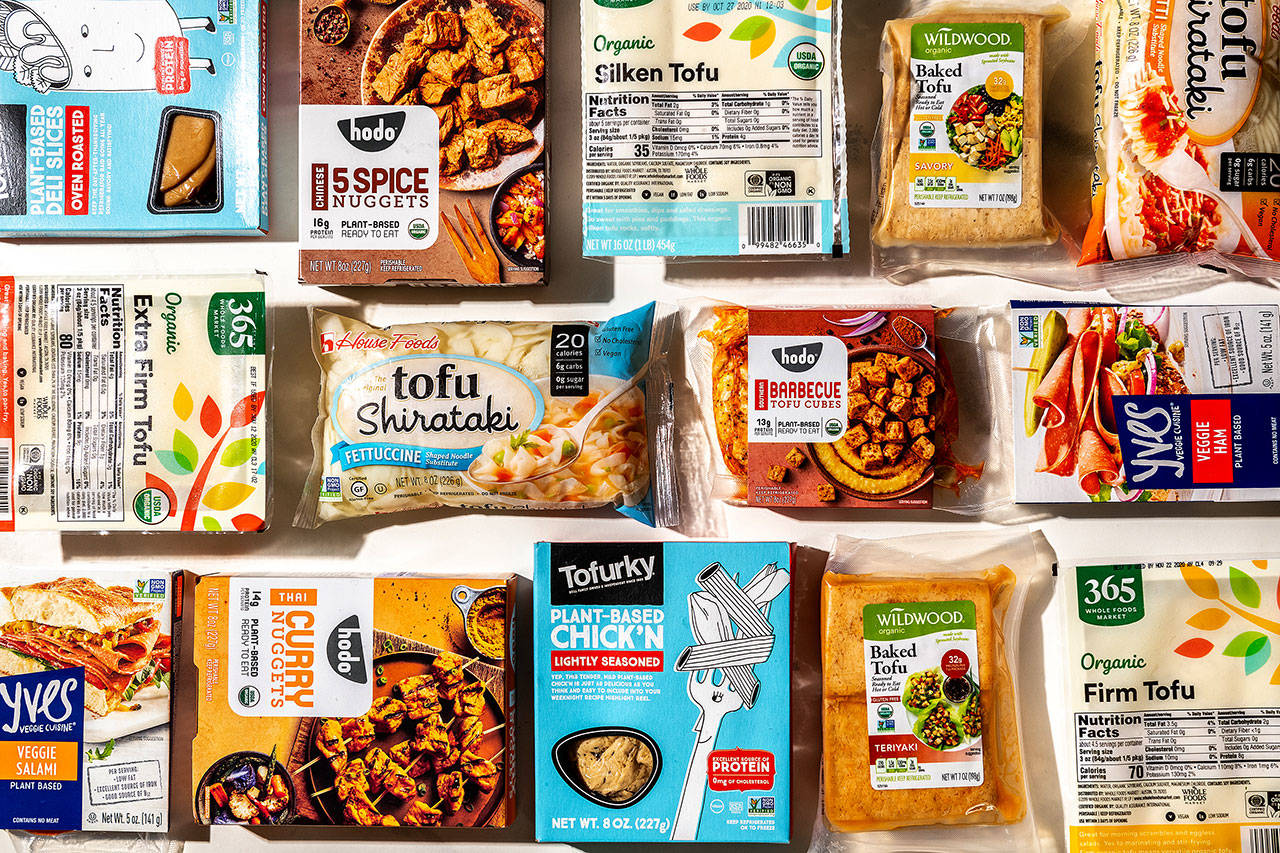When the pandemic hit, grocery stores were having trouble keeping up. First it was Clorox wipes and toilet paper. Then it was flour and … tofu?
Since U.S. coronavirus shutdowns began in mid-March, tofu shortages have been reported from Seattle to Washington, D.C., with manufacturers struggling to keep up with demand even as grocery stores rationed sales to customers.
Nielsen data shows tofu sales 40% higher in the first half of 2020 as compared to last year, while Pulmuone Brands — owner of Nasoya, the nation’s No. 1 tofu brand — was forced to ship an additional 1 million packs from South Korea, the world’s biggest consumer of tofu, to the United States this summer while their American plants caught up with demand.
“We’ve struggled for years to figure out how to get more tofu into people’s mouths in the U.S.,” said Jay Toscano, executive vice president of sales for Pulmuone. “In the past, if we’d had 2% growth in sales from one year to the next, we’d be high-fiving each other. This year we’re seeing 20% growth, and we could easily have grown 50% if we could keep up with production.”
Why is tofu having this moment?
Tofu’s affordable. It’s low in fat and high in protein. And it’s far removed from the coronavirus outbreaks tainting slaughterhouses, which has many reconsidering their relationship with meat for reasons beyond the virus.
And yet, while a centuries-old staple, tofu’s popularity in the states, until recently, has been slow to rise. With multiple styles and a mild taste, many people say they just don’t know what to do with it.
So we’ve created a guide. From soft to silken to extra firm, here’s a breakdown of some of the most popular types of tofu and how to use each.
Block tofu: soft, medium, firm and extra firm
Most tofu is made out of soybean milk that’s boiled, curdled, and then pressed.
“It’s basically like making cheese,” said Mark Amey, owner of Fresh Tofu Inc.
A lot of the variation in tofu, Amey said, comes down to the pressing time, which eliminates excess water. The firmer the tofu, the more water that’s been pressed out.
Among the most common styles of tofu is block tofu, which comes in soft, medium, firm, and extra firm varieties. Each serves its own purpose and will take on the seasoning with which you pair it.
Soft and medium
Soft tofu is delicate, with a custard-like texture similar to silken tofu (see below). Drain and then blot it with a paper towel before using. Medium tofu is less common, mainly found in shelf-stable boxes outside of the refrigerator section. While slightly denser, it can be treated similarly as soft tofu.
Best for: Steaming, boiling, braising, deep-frying, and pureeing (soft tofu only) into sauces
Try it: Cubed in miso soup, noodle soups, and mapo tofu, fried in age dashi tofu, pureed into smoothies (soft tofu only), or steamed and topped with a soy-chili, garlic-ginger or oyster sauce
Firm and extra-firm
Best for: Baking, stir-frying, pan-frying, boiling, deep-frying, air-frying
Try it: Crumbled into tofu “egg” scramble, “egg” salad, or Italian-herb-seasoned “ricotta,” cubed into veggie stir-fries, fried rice, and noodle dishes, sliced for banh mi or baked BBQ tofu, air-fried for salad croutons, or pat it dry and pan fry slices for sandwiches with sauteed vegetables and mayo.
Silken tofu
Silken tofu never gets pressed, which gives it a higher water content, and an extra smooth, silky texture. Be gentle when removing its packaging, and let it drain on a paper towel.
Best for: Smoothies, creamy desserts, salad dressings, sauces and dips
Try it: Pureed into smoothies, salad dressings, sauces, dips, and creamy desserts like mousse, pudding, and cheesecake, or traditional in Japan, raw and chilled, topped with grated ginger, bonito flakes, scallions and soy sauce.
Smoked tofu
Smoking tofu turns the bland ingredient into a flavorful snack you can eat right out of the package. Tofu is traditionally smoked above tea leaves, but is also placed over wood chips. If you have a smoker or gas grill, you can play around with smoking your own. Almost always an extra firm tofu, it turns even denser and chewier through the smoking process. There’s no need to cook or press it once removed from its packaging.
Best for: Any dish that you want to add a smoky flavor; It’s often eaten raw, but can also be tossed into stir-fries and stews
Try it: Cubed atop salads or grain bowls, sliced for sandwiches (try replacing the bacon in a BLT), stirred into chili or raw as a snack
Baked tofu
Baked tofu is pre-seasoned tofu that’s marinated, baked, and then typically vacuum sealed. It’s mostly made from extra firm tofu, and develops a chewy texture through the baking process. Seasonings vary, ranging from five-spice to Italian to sesame ginger. Most work well to top salads, but for other dishes, choose your flavor accordingly.
Best for: Snacking, stir-fry
Try it: As a snack, cubed atop salads or grain bowls, sliced for sandwiches, cubed into veggie stir-fry or atop noodles (depending on the seasoning); toss it with cooked soba noodles, sesame oil, soy sauce and chopped scallions
At Pulmuone, the numbers are telling an encouraging story about the demystification of tofu. Just two years ago, the tofu giant was seeing its products in just 5% of American households. Adding baked tofu to the Nasoya lineup increased that penetration to 7 %, and now, six months into the pandemic, the number has soared to over 16%.
“We’re finding that consumers have increased confidence in cooking with tofu,” Toscano said.
The Washington Post contributed to this story.
Talk to us
> Give us your news tips.
> Send us a letter to the editor.
> More Herald contact information.


























